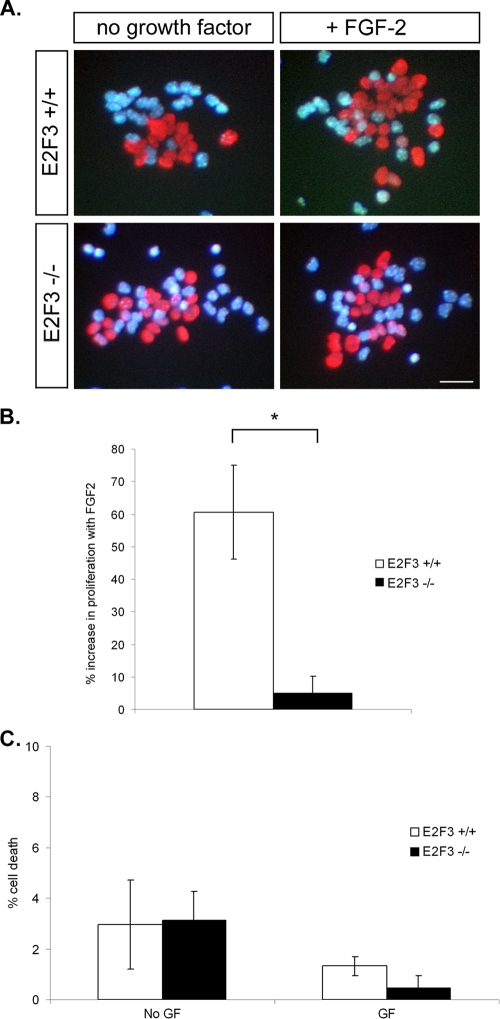FIG. 8.
E2F3 mediates neural progenitor responsiveness to FGF2. E14.5 cortical progenitors were cultured in the absence or presence of FGF2 for 22 h. BrdU was added to the cultures to label cells in S phase, and cultures were fixed 6 h later. (A) BrdU immunohistochemistry (red) and Hoechst nuclei staining (blue) of cortical progenitor cultures from wild-type and E2F3-deficient mice in the absence or presence of FGF-2. The rate of proliferation was assessed according to the number of BrdU-labeled cells over total number of cells (Hoechst stained nuclei). (B) Bars represent the change in rate of proliferation for cultures without and with growth factor. While wild-type cultures exhibit a 60% increase in proliferation in response to FGF2 addition, E2F3-deficient progenitors exhibit no appreciable increase (three wild-type and four E2F3−/− embryos from a minimum of two litters). (C) Cell death in proliferating clumps in culture was examined by using Hoechst morphology to identify dying cells. In both the absence and presence of added FGF-2, no difference in cell death was observed between control and E2F3−/− embryos (three wild-type and four E2F3−/− embryos from a minimum of two litters). Bars represent means ± SEM. Significance was determined using a two-tailed t test. *, P < 0.05. Bar = 500 μm.

